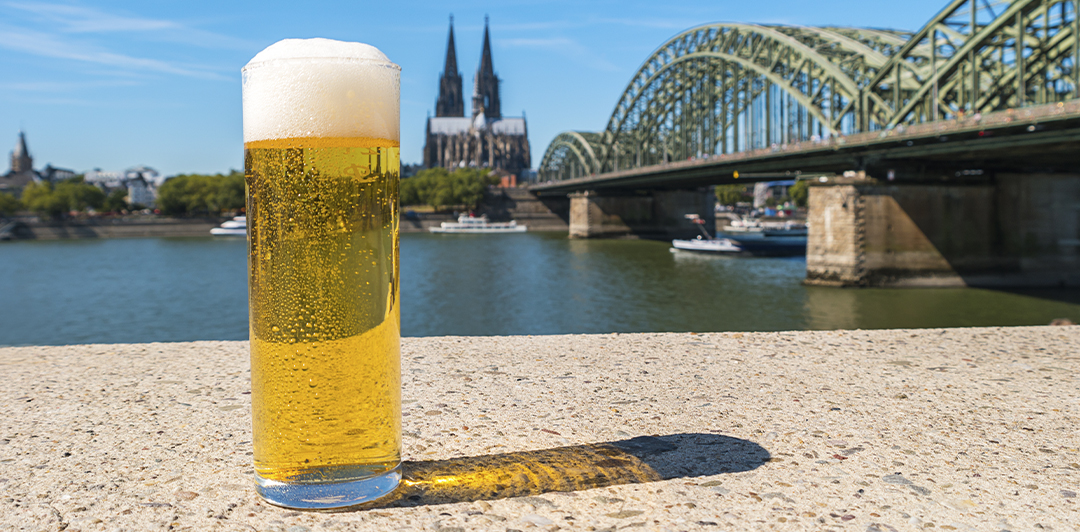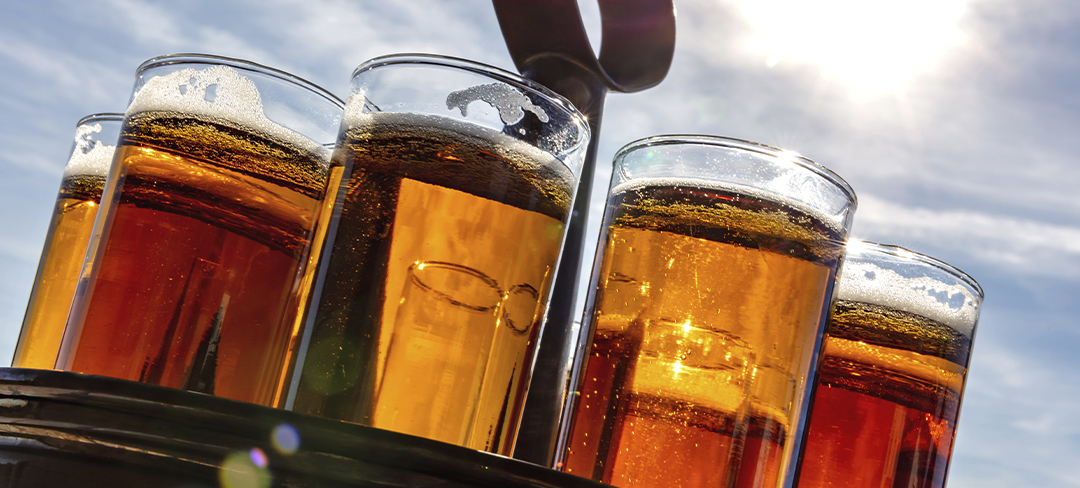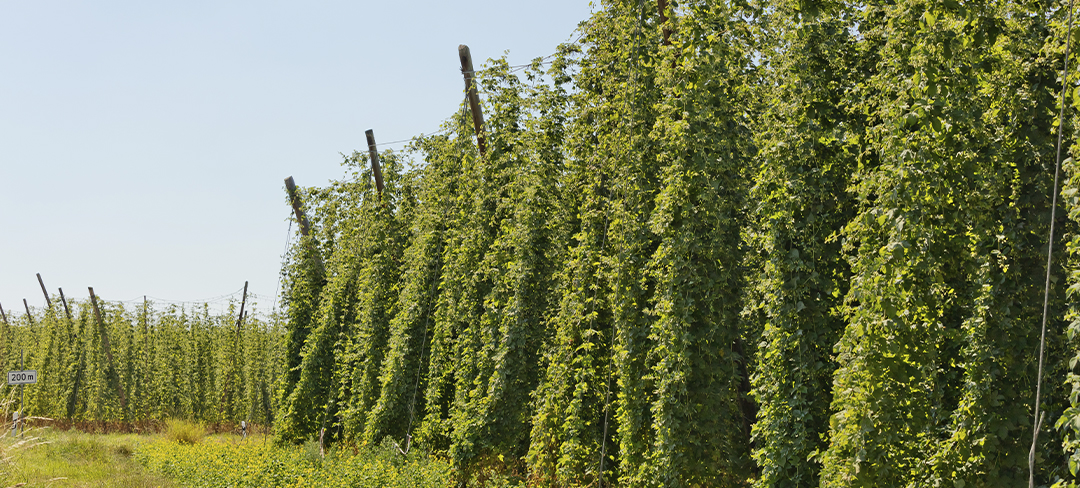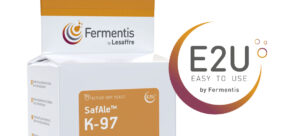Kölsch Yeast, the Multi-Sport Athlete of Beer

Bo Jackson played major league baseball and pro football. So did “Neon” Deion Sanders. And surely you remember Dave Winfield. Before embarking on his 22-year Hall of Fame baseball career, “Winnie” was drafted by the San Diego Padres (MLB), Atlanta Hawks (NBA), Utah Stars (ABA), and Minnesota Vikings (NFL). Multi-sport athletes like these defy simple categorization.
It’s kinda the same with Kölsch yeast, a top-fermenting ale strain that’s cold-conditioned like a lager to beat bottom-fermented beers at their own game.

Developed in the late 1800s in Cologne (or Köln), Germany, the Kölsch style was first produced by regional ale brewers aiming to out-crisp, out-clean, and out-compete the pale Bohemian lagers pouring into their home turf. The plucky upstart Kölsch has put up a good fight ever since, occupying a tasty space between industrial lagers and full-flavored traditional beers for over 100 years. These Lagered Ales even get served in their own special glass, the famous .2-liter Stange.
To learn more about traditional Kölsch service and how it can help you move more beer, head this way.

Yes, the crowds are mad for Kölsch. And how could they resist? The word Kölsch just rolls off the tongue. It goes down even easier. Light gold in color and delicately balanced, the style offers up subtle grainy sweetness and a touch of herbal hop spice. It finishes dry and crisp, somewhere between spritzy and refreshingly effervescent. By combining elements of both fruit-forward ales and clean-finishing lagers, Kölsch tends to please whatever palates show up at the pub.
Here’s something fun: In 1986, the Kölner Brauerei-Verband (Cologne Brewers Association) got together and cranked out the Kölsch Konvention. This agreement further defined the beer style and regulated its production and labeling. Essentially, if your Kölsch isn’t brewed in Cologne, the old saw goes, it’s just a sparkling ale.
Side note: Can you imagine American brewers agreeing on something like production and labeling practices? 😬
Modern commercial examples of Kölsch abound around the North American continent. Most run between 18-30 IBU and near 4.8% ABV, give or take a couple points. Experiencing these beers out of doors may cause mild euphoria.
- Boulevard Beer American Kölsch (KC, MO)
- Left Hand Travelin’ Light Kölsch (Longmont, CO)
- Halfway Crooks Beer Ferina (Atlanta, GA)
- Alaskan Brewing Co. Summer Ale (Juneau, AK)
- Ornery Beer Co. Light of Cologne (Fairfax, VA)
- Sierra Nevada Kölsch (Chico, CA)

Ready to mash in? Here’s what you’ll need to finish the job.
Malt
Weyermann® Pilsner Malt – Pale straw in color, its malty-sweet flavor hints at honey. An excellent performer in the brewhouse, it provides substantial body and mouthfeel in any beer style.
Weyermann® Vienna Malt – Lightly kilned for use in lager styles, this Vienna contributes a golden color, full body, and smooth mouthfeel. Malty-sweet and bready with a waft or two of honey, notes of almond and hazelnut round out the profile.
Weyermann® Brewing Malt (Type Cologne) – Prized for producing medium-bodied, golden-colored, smooth-tasting ales and lagers, choose Type Cologne for a clean finish and characteristic gentle notes of honey.
Weyermann® Acidulated Malt – Lowering your wort pH can improve mash efficiency, boost fermentation, and bring about a stable, better-tasting final beer. The ideal range for Kölsch is 5.4-5.6.
Weyermann® CARAFOAM® – Known for improving foam, head retention, and body, Carafoam is drum-roasted German two-row barley and suitable in any style you wish.
Weyermann® Pale Wheat Malt – Ideal for continental wheat beer styles like Hefeweizen and its clear cousin Kristallweizen, Pale Wheat Malt brings big notes of bread, nuts, biscuits, toffee, and light caramel when incorporated into your Kölsch.

Hops
German Amira – Slightly herbal and spicy, expect sweet lemony-citrus aromas to shine in the final beer. Great for aroma and finishing additions.
German Aurum – Exclusive to BSG, Aurum is spicy and herbaceous with traces of fresh citrus. When used for late additions, its classic noble hop character comes through.
Hallertau Mittelfrüh – Sweet, earthy, and herbal, some consider it the epitome of noble hops. When your lawn-mower beer needs aromas of fresh-mown hay, this is the one.
Hallertauer Tradition – Strong herbal and spice components stand up tall in traditional German ales and lagers. An underpinning of bright fruit may knock you off your feet.
German Hersbrucker – Floral and herbal, its mellow spiciness plays well in German ales, Belgian Ales, and Pilsners. Candied citrus aromas may appear fleetingly.
German Select – Elevates any traditional lager or cold-fermented ale with a spicy, flowery character and undertones of berry and citrus.

Yeast
Fermentis SafAle™ K-97 – Top-cropping ale yeast for German Ales and other top-fermented beers with low esters. It produces a fantastic foam head.

Fermentis Head Brewer Olaf Morgenroth Talks SafAle™ K-97
“I have used a lot of Fermentis yeasts commercially. But now I’m able to work with them more closely and SafAle™ K-97 has really surprised me. A few years ago, I was using it for cultures we were making (at my previous brewery). And now it’s a popular yeast to use for Hazy and other very hop-forward IPAs, where biotransformation may be desired.” [Ed. Note: But don’t forget Kölsch!]
Before You Brew, Let’s Check in with BSG’s Technical Support and Training Manager Ashton Lewis for a Few More Delicious Kölsch Tips
While Kölsch, the multi-sport style, deftly threads the needle between clean, crisp lagers and estery ales, it should always be crystal clear. Cloudy Kölsch is not a thing in Cologne, to be clear. Prolonged cold conditioning is the traditional method used for conditioning and clarification. Biofine Clear or Biofine ECO are great options to consider if you want to shave a bit of lagering time off your schedule.

The lager-like crispness of Kölsch clones can be accentuated by adjusting pre-boil wort pH to around 5.2 with lactic acid. This technique also makes for a cleaner hop bitterness, adding to Kölsch’s exceptional drinkability. Another fun aroma tweak is cooling wort to about 15ºC and allowing it to free-rise to 16ºC for a cool start to fermentation. Cooler-than-normal ale fermentations generally increase the production of sulfur dioxide, adding a bit of that fresh lager-like sulfur action to the clean, fruity nose of a great Stange of Kölsch. Additionally, at this cooler fermentation temperature, breweries with fermentation vessels rated to 30 psi (2 bar) and spunding valves can naturally produce beers with up to 2.8 volumes of CO2.
Lastly, I’ll drop a general tip here about brewing water. Looking at the water analyses in cities or regions associated with specific styles is a great start to developing brewing water profiles. For example, water analyses from the various water sources in Cologne show calcium between 75-100 ppm, magnesium at 15 ppm, sodium between 15-35 ppm, sulfate between 60-90 ppm, and chloride between 20-65 ppm. The kicker is the 200-260 ppm of bicarbonate. This translates to about +6.5º dH (German hardness) of residual alkalinity and indicates that Kölsch brewers in Cologne certainly acidify mash pH. The general tip here is to keep an eye on your water alkalinity and the alkalinity of traditional waters when reviewing water references.
On behalf of all the thirsty beer drinkers, BSG thanks you for brewing Kölsch.
Resources
https://www.foodandwine.com/drinks/what-is-kolsch
https://www.craftbeer.com/styles/german-style-kolsch